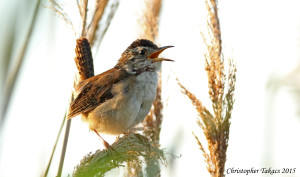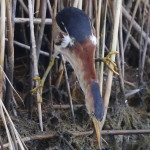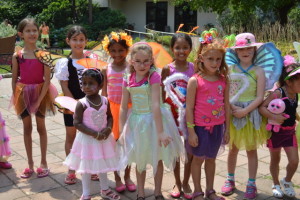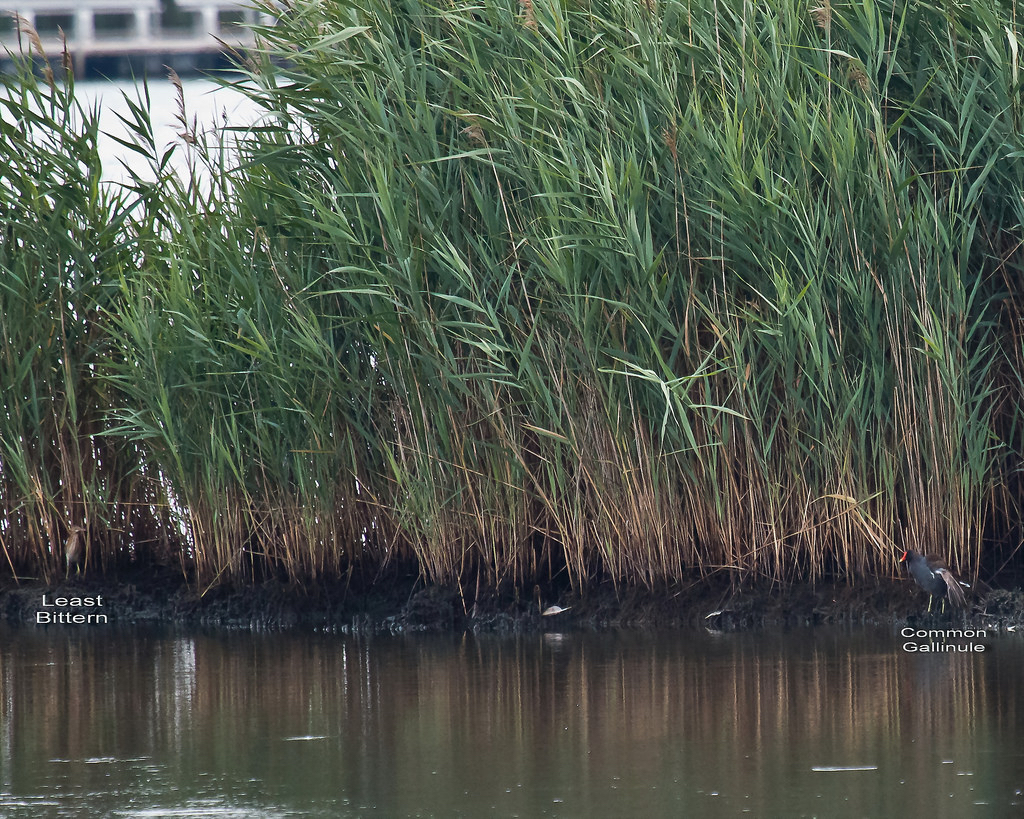 The Least Bittern and Common Gallinule that have been seen hanging out in the DeKorte marshes the past couple weeks made a joint appearance Thursday. They’re not exactly best buddies, keeping their distance a bit. But could this be the start of a wonderful friendship? Thanks to Greg Miller for the photo.
The Least Bittern and Common Gallinule that have been seen hanging out in the DeKorte marshes the past couple weeks made a joint appearance Thursday. They’re not exactly best buddies, keeping their distance a bit. But could this be the start of a wonderful friendship? Thanks to Greg Miller for the photo.
Monthly Archives: July 2015
Enjoy Some Music By The Riverside Tonight!
Friday, Aug. 7, 7:30 – 9 pm
River Barge Park, Carlstadt
Tonight’s weather forcast shows low 80’s, the perfect evening to bring your lawn chair or stroll the pier while listening to the sweet jazz sounds of guitarist Rick Pressler and sax player Steve Kaplan at River Barge Park.
Reminder, the barge can get a little chilly in the evenings, so a light sweater might go a long way. Register here.
Don Torino’s Life in the Meadowlands: The Marsh Wren Returns
Whether you are wandering the trails of DeKorte Park, or meandering Mill Creek Point you are almost sure to hear bubbling burbles and chatters coming from meadow grasses. This seldom seen but more often heard little bird is the Marsh Wren. A delightful, tiny bird about 5 inches in length that makes up for its small stature with its loud singing voice. The Marsh Wren can be heard filling the meadows air with its gurgling melody in both day and even sometimes at night during breeding season. For me it is a joy to hear its unique happy sounds as I stroll the Marsh Discovery Trail at DeKorte Park. At the same time it is also very challenging to get a glimpse of the little wren unless you are very patient as it quickly maneuvers thorough the phragmities searching for insects. Occasionally if you are very lucky one will pop to the top of the grasses and give you a quick peak before it disappears once again.
It seems to me that the Marsh Wren was not always as common as it is today in the Meadowlands. I can’t recall seeing or hearing this charming little bird in my more youthful years. Just as the Eagle and the osprey have returned maybe it was also the case for the little Marsh Wren? So, since birders’ memories can be a bit subjective (especially mine) I thought I would ask Rick Wright , author of “Field Guide to Birds of New Jersey.”
“Marsh wrens are exceptionally sensitive to habitat changes” Rick told me , “and when marshes degrade or are destroyed, the marsh wrens go with them. They’ve increased in the Meadowlands with the increase in marsh quality — but may decline again if, for example, certain new non-native invasive plants such as Arundo colonize.” Rick also said they are susceptible to pollutants. “Marsh Wrens are also known to carry high levels of heavy metals in southwest Arizona, but I don’t know whether that’s the case here,” he said.
Nature Walk At River Barge Park This Sunday
 The First-Sunday-of-the-Month Nature Walk with the BCAS and NJSEA is this Sunday, Aug. 2, from 10 am to 3 pm at River Barge Park in Carlstadt. We’ll stroll this beautiful park along the Hackensack River and look for ospreys, herons, egrets, butterflies, and more while taking in the scenic views. To register for this free event click here. For more information call 201-230-4983.
The First-Sunday-of-the-Month Nature Walk with the BCAS and NJSEA is this Sunday, Aug. 2, from 10 am to 3 pm at River Barge Park in Carlstadt. We’ll stroll this beautiful park along the Hackensack River and look for ospreys, herons, egrets, butterflies, and more while taking in the scenic views. To register for this free event click here. For more information call 201-230-4983.
Sora Photographed at DeKorte Park
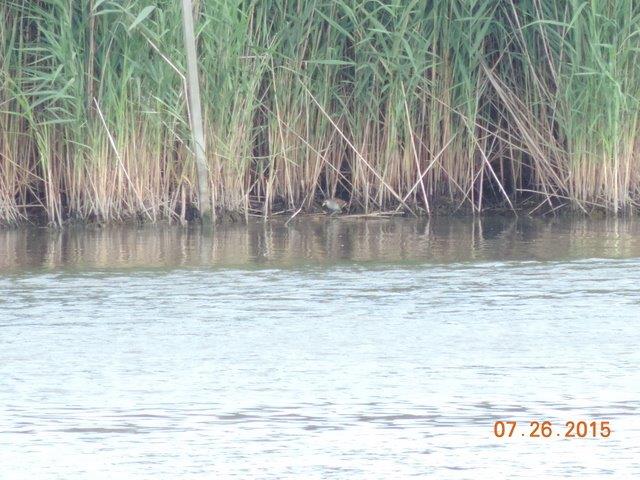 Richard Brown sent this photo of the Sora that has been sighted numerous times at DeKorte Park in Lyndhurst over the past week. The bird is not uncommon to the region, but is a rare sight. According to Allaboutbirds.org, the Sora is a small, secretive bird of freshwater marshes and the most common and widely distributed rail in North America. Its distinctive descending whinny call can be easily heard, but actually seeing the little marsh-walker is much more difficult.
Richard Brown sent this photo of the Sora that has been sighted numerous times at DeKorte Park in Lyndhurst over the past week. The bird is not uncommon to the region, but is a rare sight. According to Allaboutbirds.org, the Sora is a small, secretive bird of freshwater marshes and the most common and widely distributed rail in North America. Its distinctive descending whinny call can be easily heard, but actually seeing the little marsh-walker is much more difficult.
(Not So) Stealthy Least Bittern and Sora
Soras and Least Bitterns are usually quite stealthy, but the small, secretive birds have been making themselves known at DeKorte Park over the past week. There have been multiple, near daily reports of a Sora; if anyone has photos, please send to me at brian.aberback@njmeadowlands.gov and I’ll post. Dennis Cheeseman caught the Least Bittern in the sequence above.
Butterfly Day Kids
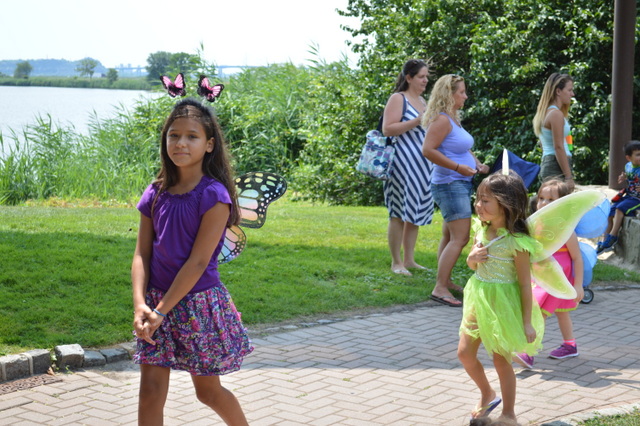 Judging by these photos, the kids had a great time at Butterfly Day while learning about the importance of environmental conservation and stewardship. Getting youngsters out into our parks and natural areas is crucial in inspiring the next generation of naturalists, biologists, scientists and all matter of champions of the envirnoment.
Judging by these photos, the kids had a great time at Butterfly Day while learning about the importance of environmental conservation and stewardship. Getting youngsters out into our parks and natural areas is crucial in inspiring the next generation of naturalists, biologists, scientists and all matter of champions of the envirnoment.
Butterfly Day Species
 At least 14 butterfly species were observed in DeKorte Park in Lyndhurst during Butterfly Day on Sunday, July 26, They are:
At least 14 butterfly species were observed in DeKorte Park in Lyndhurst during Butterfly Day on Sunday, July 26, They are:
Monarch
Red Admiral (photo by Maggie Sojkowski)
Broad-Winged Skipper
Silver-Spotted Skipper
Peck’s Skipper
Clouded Skipper
Least Skipper
Fiery Skipper
Zabulon Skipper
Eastern Comma
Easter Tiger Swallowtail
Sachem
Pearl Crescent
Eastern-tailed Blue
Cabbage White
Butterfly Day Was Spectacular!
Our Sixth Annual Butterfly Day held yesterday proved to be the best-attended yet, with some 1,000 people, mostly families, visiting DeKorte Park throughout the day. There were at least 14 species identified, which we will list in a post to follow.
Visitors enjoyed butterfly walks and talks and, of course, viewing the winged marvels. Hundreds of kids painted bird boxes to take home and participated in butterfly crafts, coloring and face-painting.
We’d like to take this opportunity to thank our co-sponsors, the Bergen County Audubon Society and the North Jersey Chapter of the North American Butterfly Association. Thanks also to the Monarch Teachers Network.
We hope to post multiple photos throughout the day. To start, here are (above, left to right), an Eastern Tiger Swallowtail, Red Admiral and Silver Spotted Skipper, courtesy of Jim Wright.
Banded Sandpiper from Brazil Seen Here!
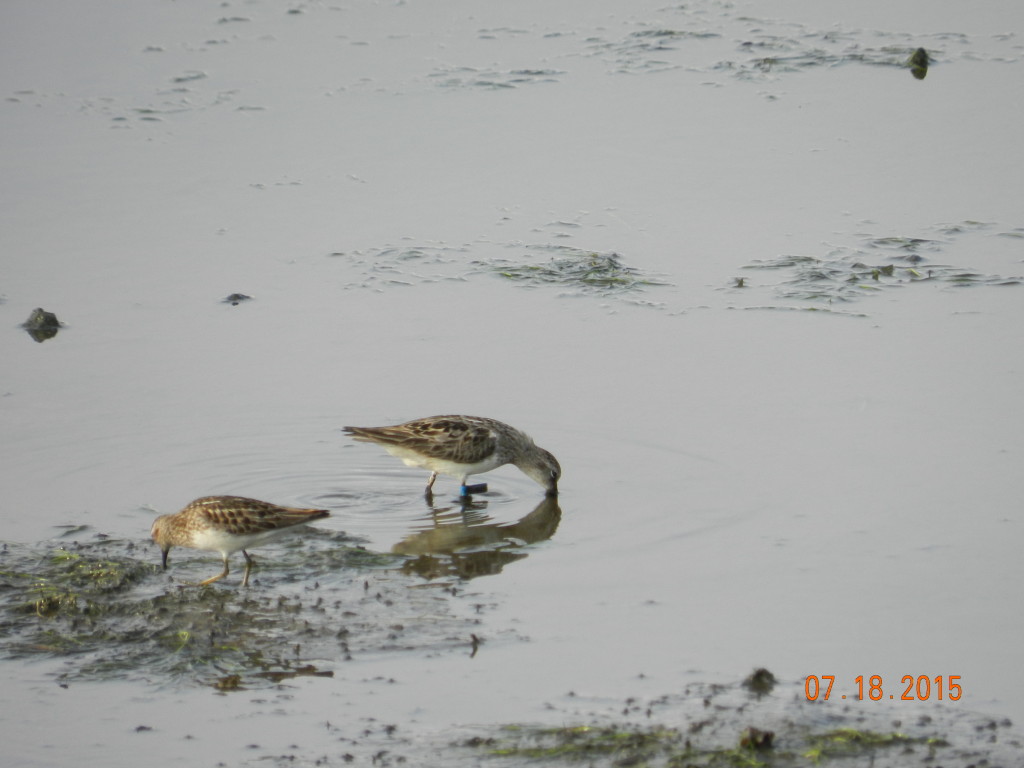 Exciting news: Liberty Valance photographed this banded Semipalmated Sandpiper in Mill Creek Marsh in Secaucus yesterday.
Exciting news: Liberty Valance photographed this banded Semipalmated Sandpiper in Mill Creek Marsh in Secaucus yesterday.
Don Torino did some digging and found that the peep was likely banded in 2012 by a New Jersey Audubon Society field team in Maranhao, Brazil. Check out info on the Brazil bird-banding here and enjoy the Peep from Ipanema in all its glory!


